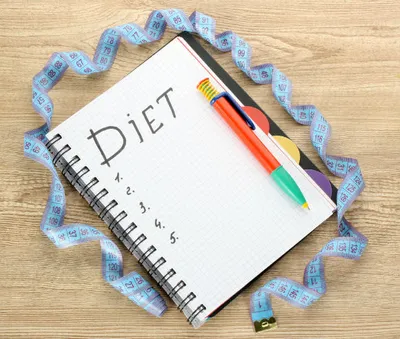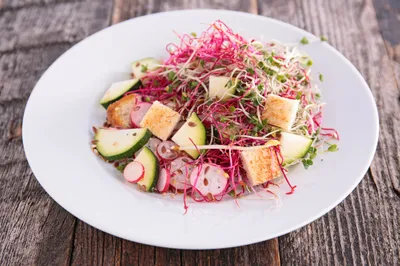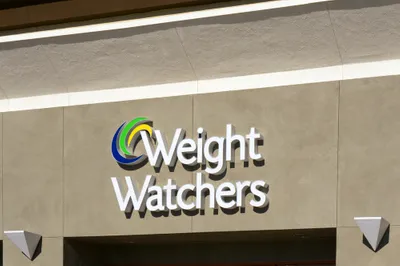So, you’ve decided this will be the year you lose weight. It’s a common resolution and one that many give up within a few weeks. But if you can stick to it, you’ll be grateful for the results. Not only will you lose weight from following a healthy diet, but the benefits of a balanced diet can also improve your mood, reduce stress, and make you feel good from head to toe. And if you have food sensitivities, cutting back on certain foods could reduce stomach pain, cramping, and digestive problems.
While there are certainly a lot of popular crash diets and detoxes, the best way to be healthy is through maintaining a balanced diet year-round. To help choose the best diet for you, read on for a list and summary of the top ten diet trends of 2015…
1. New Nordic Diet
Contrary to its name, the New Nordic Diet (NND) isn’t actually new, it’s just recently become recognized by more health experts who acknowledge it’s ability to aid in weight loss and improve overall health. It has rightfully earned a place as one of the diet trends you’ll see in 2015, as awareness of the health benefits from recent studies continues to spread. With a focus on whole foods, seafood, nuts, seeds, and small portions of lean wild meat (or free-range meats as an alternative), NND provides variety, flavor, and loads of nutrients.
Like many dieters, you’ve probably tried diets that focus on one type of food or cut out several food groups. Then, if you begin eating what you’ve cut out, you gain the weight back—fast. But when following New Nordic Diet, you get to eat a lot of food groups while buying local and organic foods, and being environmentally friendly. It can help with weight loss, reduce body fat, and lower cholesterol and blood pressure.
2. Mediterranean Diet
If you love food that’s rich in flavor and don’t want to completely cut out a food group, the Mediterranean diet may be right for you. There have been a lot of studies about the diets of Europeans because of how healthy they are. The Mediterranean diet is known as an effective diet, rich in vitamins and nutrients. The fresh produce, regular use of olive oil both in cooking and flavoring, and little red meat, all contribute to a balanced diet that can help with weight loss.
The amount of fresh fruits and vegetables in the Mediterranean diet ensures you’re getting tons of vitamins and nutrients, and plenty of antioxidants. With fresh produce being an integral part of the diet, the health benefits are vast – studies have shown the Mediterranean diet can lower the risk of heart disease, prevent high blood pressure, and reduce the risk of diabetes. It’s also been linked to preventing certain cancers. If you’re up for a change, give the diet a try—it’s easy to follow and you’re bound to enjoy the benefits.
3. The Biggest Loser Diet
You’ve probably heard about or seen The Biggest Loser, a popular reality TV show featuring obese people losing weight through diet and exercise. While North America’s obsession with reality TV might contribute to the show’s popularity, The Biggest Loser Diet is becoming quite trendy because it’s proven to greatly help with weight loss. You don’t have to exercise for several hours a day like those on the show, but if you follow this diet, it’s recommend you incorporate moderate cardiovascular exercise and muscle training for best overall health.
Like a few other effective diets, The Biggest Loser Diet is likely so popular and going to continue to be trendy because it doesn’t cut out any food groups. It’s all about moderation, lean meats, and loads of fruits and vegetables. It also involves using a food journal, something that on its own can be effective for weight loss—by tracking and writing down what you eat, you’re forced to acknowledge your eating habits. And if you have poor eating habits, the diet, along with the journal, can be very effective in weight loss and reducing your chance of heart disease.
4. Flexitarian Diet
This term might not be something you’ve heard before, but flexitarian basically refers to being a vegetarian who eats meat on occasion. It’s kind of like vegetarianism with cheat days or treats, with meat being the prize. The flexitarian diet is all about eating plant-based foods that provide a plethora of vitamins, nutrients, fiber, and minerals that contribute to better health. On this diet, you’ll eat fruits, vegetables, nuts, seeds, whole grains, legumes, and small portions of meat. Tofu is a common food for both vegetarian and flexitarian diets—it’s an effective replacement for meat and a vegetarian favorite, since it’s a good source of protein.
Unlike the vegetarian diet, the flexitarian diet is often considered even better for you in regard to weight loss and overall health. Why? A common problem vegetarians face is not getting enough protein in their diet. While grains like quinoa and other non-meat foods like tofu are high in protein and can help prevent this from happening, many people find adding small portions of meat is easier to ensure a balanced diet.
5. Weight Watchers
It would be wrong to leave the well-known Weight Watchers diet off any trend list. It’s been around for a long time, and rightly so—it’s extremely effective for weight loss and encourages healthy eating habits. The portion control style allows you to still have treats now and then. This is likely why so many people achieve their weight loss goals and stick to the diet even when they’re not technically enrolled in the program, since it doesn’t cut out any foods.
The Weight Watchers diet assigns points to food based on total calories and nutritional information. When you’re on the diet, you’re assigned an amount of points to use every day which varies from person to person, since it’s dependent on your gender, height, age, weight, and activity level. When you eat something, you take points off your daily points. Once you’ve used all of your points, you shouldn’t eat anything else—but you should be full. The great thing about Weight Watchers is the support you can find online and in person at weekly meetings, and with the WW app and other tools to help you succeed.
6. HMR Diet
New about the HMR (Health Management Resources) Diet has recently begun to spread, as its ability to aid in weight loss has been recognized by more health experts. According to HMR, the diet was initially used in clinics, hospitals, and other medical centers across the U.S., but it now offers a do-it-yourself program for anyone to do at home. The development of this at home program spread the word, since anyone can now take part in the comfort of their own home.
The HMR Diet program consists of meal replacements, fruits and vegetables, and encourages regular physical activity to help with significant weight loss. The program also considers more is better—as long as you’re eating more fruits and veggies, or meal replacements—because they believe having more of those foods is better than eating something else. You’ll feel full when following the diet but your choice of foods is quite limited. This type of diet isn’t for everyone, but it could be a good kickstart to your weight loss goals, and you can always transition to a diet with variety after you’ve lost the initial weight.
7. DASH Diet
The DASH diet isn’t a new concept, but it continues to make the cut as one of the most effective diets, largely due to how effective it is for weight loss, and how balanced and good the diet is for your overall health. DASH, or Dietary Approaches to Stop Hypertension, was created as a way to fight and prevent high blood pressure. There’s nothing fancy about this diet— you’ll have variety and choices. Some of the heart healthy and other nutrient-rich foods in the diet include fruits and vegetables, low-fat dairy, nuts, whole grains, lean meats, chicken, and fish.
With how easy it is to follow and incorporate DASH into your diet, it’s definitely a crowd-favorite. It doesn’t cut out any major food groups like a lot of other diets, and the health benefits are vast, from lowering blood pressure and cholesterol, to reducing the risk of certain cancers and type 2 diabetes. Many dieters who follow DASH for their weight loss goals easily continue to follow the diet and continue to reap the health benefits after their goals are met.
8. TLC Diet
The TLC (Therapeutic Lifestyle Changes) diet has quite a few things going for it, so we’ll hear more about it in 2015. While this diet could help with weight loss, it’s considered one of the best diet’s overall because it encourages healthy eating and consists of heart-healthy foods. When following the TLC diet, you can greatly lower high cholesterol by avoiding foods from your diet that are high in saturated fats. Common foods people eat while on this diet include grains, fish, low-fat dairy products, lots of produce, and lean meat.
Much of the convenience foods and snacks available in North America is bad for your health—not only is there little nutritional value, excess sodium, unhealthy fats, and sugars have been proven to lead to serious health issues, including heart disease, diabetes, and obesity. But with the TLC diet, your food choices are plenty yet healthy. The catch is that it takes a bit of knowledge and practice at understanding nutritional labels, and figuring out a good balance. If you’re interested in trying it, do some research beforehand to help you transition.
9. Modified Paleo Diet
If you’re regularly online, follow the news, or are frequently on social media, odds are you’ve heard about the Paleo diet. Its popularity steadily gained momentum over the past few years, and 2015 is bound to see even more people giving it a try due to its effectiveness for fairly significant weight loss. The downside is that it can be difficult to follow because it cuts out quite a few food groups. Luckily, Paleo diet’s growing popularity has resulted in a ton of recipe websites, cookbooks and food bloggers that make it easier to follow.
The concept of the Paleo diet is that you only eat foods that hunter-gatherers ate. It’s often referred to as the caveman diet, and consists of fruits, veggies, nuts, seeds, lean meats, and fish. On the other end, it cuts out sugar, grains, and legumes, to name a few. There’s been some controversy about it because a strict Paleo diet cuts out too many foods, including vital nutrients. But you can modify the diet to ensure you get the vitamins and nutrients for good health. If needed, consult a dietician or your doctor for guidance.
10. Clean Eating Diet
Knowing more about what you eat is a growing trend, and what’s referred to as the clean eating diet will continue to grow in popularity throughout the year—and possibly many more years to come. Whether you’re conscious of what’s added to processed and pre-packaged foods or not, you probably know people who are. They’re the ones that always have fresh produce, no processed foods, and rarely any snacks from the junk aisle of the grocery store. They might not know they’re following the clean eating diet, but they’re employing the practice of it.
The diet is focused on clean foods—foods that aren’t processed, and contain zero added sugar, salt or chemicals. It may feel a little daunting to try to switch over to this diet, but the benefits are worth doing so. Try transitioning slowly by buying fresh fruits and vegetables, and unprocessed meats. Not only will you cut out unnecessary fat, sugar, and sodium, but you’ll stop ingesting chemicals found in processed foods. Some of these chemicals are known to be bad for you, and many of them haven’t even been researched to see if they’re harmful.













